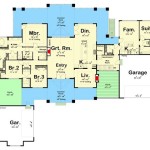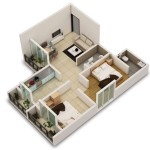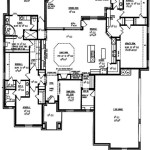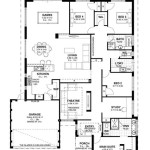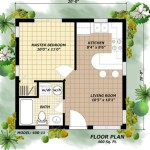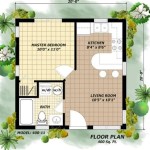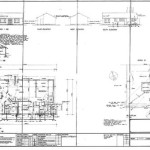Building Plans for Existing Homes: A Comprehensive Guide
Modifying an existing home necessitates meticulous planning. Building plans are not merely suggestions; they are detailed blueprints that guide the entire construction or renovation process. These plans serve as the cornerstone for obtaining permits, securing financing, and ensuring accurate execution by contractors. This article explores the critical aspects of creating building plans for existing homes, covering key considerations, essential components, and practical steps involved.
Building plans, often referred to as architectural drawings, for existing homes are visual representations of the proposed changes or additions to the structure. They offer a precise depiction of dimensions, materials, and construction techniques. These plans are critical in maintaining structural integrity, adhering to building codes, and preventing costly errors during the construction phase. They provide a shared understanding among the homeowner, architect, engineer, and contractor, fostering effective communication and streamlined project management.
1. Understanding the Importance of Accurate Existing Conditions Documentation
Before any design work can commence, a thorough assessment of the existing structure is paramount. This process involves documenting the current layout, dimensions, structural elements, and utility locations. Inaccurate documentation can lead to significant discrepancies during construction, resulting in delays, increased costs, and potential structural issues. Several methods are employed to achieve accurate documentation:
Measured Drawings: This traditional method involves manually measuring all rooms, walls, openings, and structural components and recording these measurements on paper or digitally. Laser measuring tools and sophisticated software can enhance accuracy and efficiency in this process. The data collected is then used to create a digital representation of the existing house.
3D Scanning: Laser scanners and photogrammetry techniques can create a detailed 3D model of the existing home. These scans capture millions of data points, providing an accurate representation of the structure's geometry. 3D scanning is particularly useful for complex structures with irregular shapes or intricate architectural details. The data obtained can be imported into CAD (Computer-Aided Design) software for further manipulation and analysis.
Reviewing Existing Documentation: If available, original construction drawings, survey plats, and previous renovation plans can provide valuable information about the existing structure. However, it is essential to verify the accuracy of these documents as changes may have occurred over time. Information obtained from existing documents should be corroborated with site measurements to ensure consistency.
Identifying Structural Elements: A structural engineer should be consulted to assess the existing structural elements, such as load-bearing walls, beams, and columns. This assessment will determine the capacity of the structure to support the proposed modifications and identify any required reinforcement or alterations. The findings of the structural assessment will inform the design of the new building plans.
Locating Utilities: Identifying the location of existing utilities, including water lines, gas lines, electrical wiring, and sewer lines, is crucial to avoid damage during construction. Utility companies can provide information on the location of underground utilities. Ground-penetrating radar (GPR) may be used to detect buried utilities that are not readily visible. Accurate utility mapping minimizes the risk of service disruptions and potential hazards.
2. Key Components of Building Plans for Existing Homes
A comprehensive set of building plans for an existing home typically comprises several distinct drawings, each serving a specific purpose. These drawings provide a complete picture of the proposed project, enabling accurate construction and facilitating permit approvals. The key components include:
Site Plan: The site plan illustrates the location of the existing home on the property, including property lines, setbacks, easements, and existing landscaping. It also shows the location of proposed additions, modifications, and any new site features, such as driveways, patios, or decks. The site plan ensures compliance with zoning regulations and property restrictions.
Floor Plans: Floor plans are orthographic projections that depict the layout of each floor of the existing home and any proposed modifications. They show the location of walls, doors, windows, fixtures, and appliances. Dimensions are clearly indicated to ensure accurate construction. Floor plans provide a detailed view of the interior space and its organization.
Elevations: Elevations are orthographic projections that show the exterior views of the existing home and any proposed changes to the facade. They depict the architectural style, materials, and finishes of the building. Elevations help visualize the aesthetic impact of the proposed modifications and ensure compatibility with the existing structure.
Sections: Sections are vertical cuts through the building that reveal the internal construction details. They show the relationship between different building components, such as walls, floors, and roofs. Sections provide a clear understanding of the structural system and the assembly of building materials.
Structural Drawings: Structural drawings provide detailed information about the structural elements of the existing home and any proposed modifications. They include specifications for foundations, walls, beams, columns, and roof framing. Structural drawings are essential for ensuring the structural integrity and safety of the building.
Electrical Plans: Electrical plans show the location of electrical outlets, switches, lighting fixtures, and electrical panels. They include wiring diagrams and specifications for electrical systems. Electrical plans ensure compliance with electrical codes and provide for safe and efficient electrical distribution.
Plumbing Plans: Plumbing plans show the location of water supply lines, drain lines, and plumbing fixtures. They include specifications for plumbing systems. Plumbing plans ensure compliance with plumbing codes and provide for safe and efficient water distribution and waste disposal.
Mechanical Plans: Mechanical plans show the location of heating, ventilation, and air conditioning (HVAC) equipment, ductwork, and piping. They include specifications for HVAC systems. Mechanical plans ensure compliance with energy codes and provide for comfortable and efficient indoor climate control.
Details: Details are enlarged drawings that show specific construction details, such as wall assemblies, window installations, and roof connections. They provide precise instructions for contractors and ensure proper construction techniques.
3. Navigating the Permitting Process
Most modifications to existing homes require building permits from the local governing authority. The permitting process ensures that the proposed construction complies with building codes, zoning regulations, and other applicable laws. Navigating the permitting process can be complex, but understanding the requirements and procedures can streamline the process.
Research Local Regulations: Before submitting building plans, it is essential to research the local building codes, zoning regulations, and permit requirements. These regulations vary by jurisdiction and may affect the design and construction of the proposed modifications. Consulting with the local building department or a permit expediter can provide valuable guidance.
Prepare the Application Package: The application package typically includes a completed permit application form, a complete set of building plans, and any required supporting documentation, such as structural calculations, energy code compliance reports, and environmental impact assessments. The application package must be prepared accurately and thoroughly to avoid delays in the review process.
Submit the Application: The application package is submitted to the local building department for review. The building department will review the plans to ensure compliance with applicable codes and regulations. The review process may take several weeks or months, depending on the complexity of the project and the workload of the building department.
Address Review Comments: The building department may issue review comments, requesting additional information or revisions to the building plans. It is essential to address these comments promptly and accurately. Revising the plans and resubmitting them for review may be necessary.
Obtain the Permit: Once the building department is satisfied that the plans comply with all applicable codes and regulations, a building permit will be issued. The permit must be posted on the construction site and readily available for inspection by building officials.
Schedule Inspections: During construction, building inspectors will conduct inspections to ensure that the work is being performed in accordance with the approved building plans and applicable codes. It is essential to schedule inspections at appropriate stages of construction and to address any deficiencies identified by the inspectors.
Obtain Certificate of Occupancy: Once the construction is complete and all inspections have been passed, a certificate of occupancy (CO) may be required. The CO certifies that the building is safe for occupancy and complies with all applicable codes and regulations. The CO is typically required before the building can be legally occupied.
Creating building plans for existing homes is a multifaceted process that demands accuracy, attention to detail, and a thorough understanding of building codes and regulations. By focusing on accurate existing conditions documentation, developing comprehensive building plans, and navigating the permitting process effectively, homeowners can ensure successful and compliant renovations and additions.

How To Draw A Floor Plan Live Home 3d

Home Addition Plan 6236

Where You Can Buy House Plans Live Home 3d

Part One Building Plan Views For Second Story Home Addition Built Over Existing House

How To Read A Floor Plan With Dimensions Houseplans Blog Com

Draw A Plot Plan Of Your House Icreatables Com

Important Considerations When Building A Home Addition

Discover Various Blueprints For My House

Create And Visualize House Plans In Minutes Roomsketcher

5 Stages Of Remodeling

